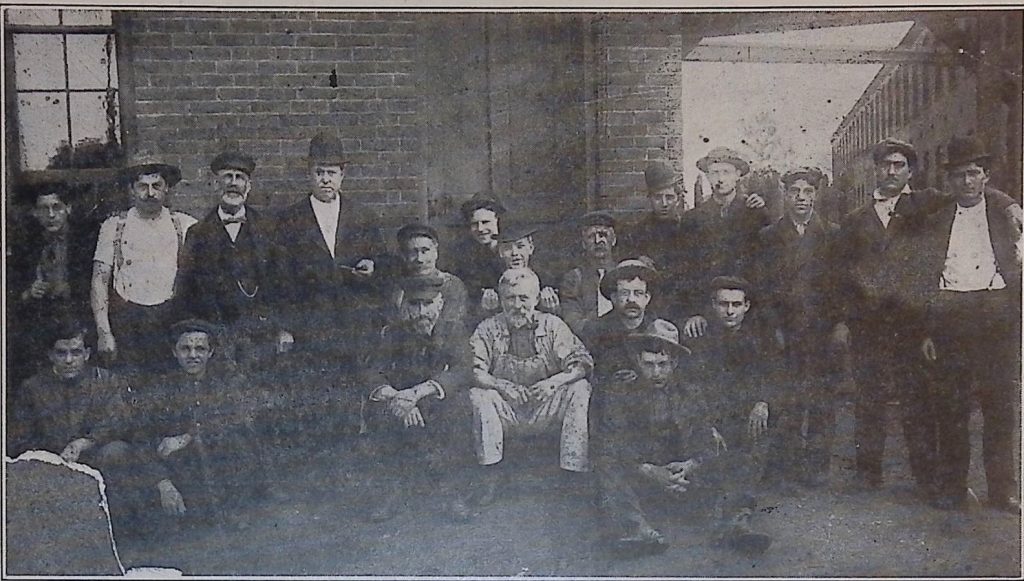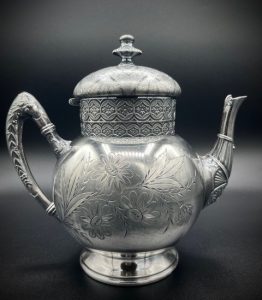By Christina Volpe
With a capital stock of $50,000, the Southington Cutlery Company began operations in a two-story brick factory in downtown Southington in 1867. Originally formed for the manufacture of table and pocket cutlery (pocketknives), the business grew steadily, expanding in 1869 to include the manufacture of carriage bolts and wood screws. With factory buildings covering a large area fronting Center Street, in 1883 the business reorganized with a capital stock of $300,000.
The Holloware Business
That same year, the company expanded its offerings to include silver-plated holloware (generally known today as serving ware), which included teapot sets, water pitchers, and other everyday objects. By the 1880s, holloware was in high demand as an emerging American middle class could afford and desired the quadruple-plated ornate pieces. Despite its name, quadruple-plated holloware is not dipped in silver four times but rather indicates that the product holds eight ounces of silver—more silver than many other manufacturers used to produce holloware at the time.
In 1893, the Meriden Britannia Company purchased the holloware department of the Southington Cutlery Company but continued to manufacture wares out of the cutlery company’s building for several years thereafter. In 1898, several smaller companies joined together to form the International Silver Company, absorbing many small silver-plating manufacturers scattered throughout Connecticut—including the Meriden Britannia Company.
By 1899, the Southington Cutlery Company’s production grew to include the manufacture of razors, curry combs, tire bolts, stove bolts, and bicycle parts. The company dropped the manufacture of cutlery altogether in 1905. The business then changed its name to the Southington Hardware Company in 1908 and continued for many years manufacturing carpenter squares and carpenter tools.
From Silverware to Hardware
The Southington Hardware Company continued operating into the 1970s before Elco Industries, Inc. of Rockford, Illinois, bought the company in 1973. At the time of purchase, the company employed 170 people and produced standard and special cold-headed fasteners. Similarly, Elco also produced fasteners and tools for use in the construction industry. Elco remained in the building until 1977.
In the 1980s, the factory became an early success story of a revitalized mill building in Connecticut. Today, the building houses several prominent businesses including a brewery, vintage arcade, coffee shop, restaurant, chocolate shop, bakery, and more.
Christina Volpe is a public historian with an MA in Public History from Central Connecticut State University where she focused on digital curation and historic preservation. Christina serves as Curator of The Barnes Museum in Southington, Connecticut.











